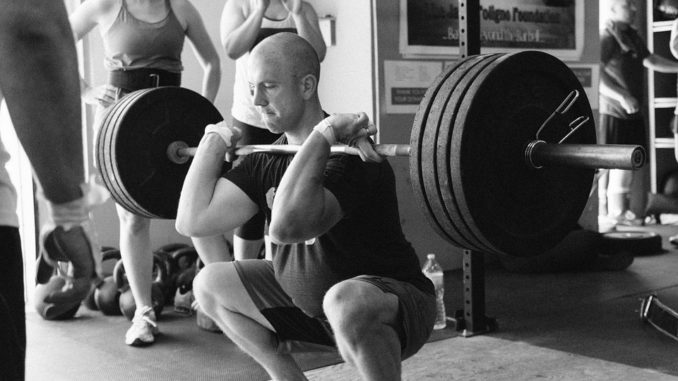
Bobby finishes a hard, focused set of barbell squats and re-racks the weight. His legs are wobbly, his heart is racing and he feels light headed as he takes a big swig from his water bottle. He looks down at his watch and presses the “start” button to begin counting down backwards from 2 minutes.
Bobby read that 2 minutes is the ideal rest time between sets in the gym, and he wants to get it exact. Once that watch beeps at the 2 minute mark, he’ll be back in the squat rack to perform another set. He stands up tall and paces around trying to catch his breath in preparation for his next battle with the weights.
*Beep* Rest Time is Over
2 minutes is up. His legs still feel weak, his heart still beats frantically and he doesn’t quite feel 100%, but that watch beeped and that means his time is up. He must perform his next set regardless of how he feels.
He unracks the weight and squats down. His legs still burn and he wishes that he could have had more time to prepare for this set. He puts forth a mediocre effort, re-racks the bar, and sets his watch for another 2 minutes.
Bobby, just like a ton of other aspiring lifters in the gym, is making a deadly, critical mistake.
By having a set rest interval between sets, he is forcing his body to train at an effort level that is far less than his maximum potential and is severely sacrificing the amount of muscle growth he can ultimately stimulate because of this.
Muscles grow because of an adaptive response to stress. You lift X amount of weight for Y number of reps, and your body adapts to this level of stress. In order to see continual gains in muscle size, you must continually force X and Y to higher and higher levels.
In other words, building muscle is all about progression in both weight and reps. It is about lifting as much weight as you possibly can for the greatest number of reps that you possibly can (within a given rep range of course) and then continually striving to improve.
Because of this, you must always go into every single set of every single workout at your maximum strength potential. By sacrificing the amount of weight you can lift, you sacrifice the amount of muscle you can build. And there is no worse way to make this sacrifice than by not providing your body with enough rest between sets.
Forget The Clock and Stopwatch
You should only begin your next set when you feel that you can perform it with 100% of your strength potential. A stopwatch cannot tell you when that time has arrived; only you can by listening to your body and relying on your own instincts.
The set rest period theory is also highly flawed because it does not take into account the fact that certain exercises tax the body much more heavily than others and therefore require more rest between them.
A deadlift and a tricep pressdown aren’t exactly in the same boat here. After a heavy set of deadlifts to failure I’ll usually be resting for at least 5 minutes, often even more. A set of tricep pressdowns is obviously not as taxing and may only require a rest period of 2.5 minutes for me to feel fully recovered.
Perform The Next Set When You Feel Ready and Can Give It 100%
Go on your instincts and only perform your next set when you feel that you can do so with 100% of your strength. Implementing just this one training technique can have a drastic effect on your muscle size and strength gains.

Be the first to comment